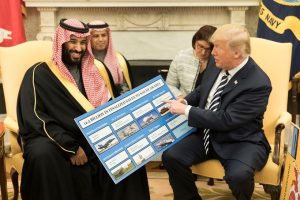by Gary Sick
The Global War on Terror (GWOT) has operated from the start on the unspoken assumption that the enemy—usually scattered and primitive—was unable to strike back effectively. U.S. drones keep watch 24 hours a day over al-Qaeda hideouts in the wilds of Waziristan, occasionally launching missiles at suspected leaders, with little worry about being shot down, much less about retaliation in kind. Al-Qaeda may mount a suicide attack, but American forces and their allies own the skies.
Is that about to end?
The vast technology gap has given the modern Global War on Terrorism (GWOT) battlefield a lopsided appearance. Highly trained U.S. soldiers have the advantage of the world’s most advanced equipment and techniques, from night vision devices to attack helicopters to pin point intelligence to an array of remote controlled weapons—all backed by air power and virtually unlimited resources. The greatest shock of 9/11 was the technological jiu jitsu of turning the West’s own advanced technology into weapons to be used against it. But turning civilian aircraft into missiles, like bombs in shoes or underwear, are essentially one-time events: insidiously clever but not endlessly repeatable.
The military doctrine is simple and was summed up with admirable brevity in recent testimony by the Chairman of the Joint Chiefs of Staff: the U.S. military should “never face a fair fight.” There is nothing new or at all cowardly about that. If the object is to win, then enter the battle with the odds in your favor. Sun Tzu wrote more than 2,000 years ago: “If your enemy is in superior strength, evade him.”
But there is a danger of complacency when the United States has the world’s most formidable and best-equipped military. The United States has some 600 overseas military bases, with many other outposts of various sorts. How much thought and attention has been given to their security from air attacks, as opposed to perimeter security on the ground?
Policy-making is susceptible to the same unspoken assumptions. When the United States gives full support to Saudi Arabia in its relentless air campaign against Houthi forces in Yemen, is there a tacit belief that the pain would largely run only one way? For several years, Saudi aircraft and bombs were able to hit targets, including many civilian sites, with impunity. Despite a few border skirmishes, it seemed unlikely that the Houthis could do any serious damage to Saudi Arabia itself or to any facilities affecting U.S. interests. That began to change over the past year, with largely ineffective strikes against airports. This weekend’s events reversed the calculation. Some five percent of the world’s oil supply was at least temporarily removed from the market by two devastating strikes on highly protected Saudi oil facilities.
The U.S. policy of maximum pressure against Iran, which effectively wiped out its ability to sell its oil, was undertaken with a presumption of impunity. Despite the shrill rhetoric about the Iranian threat, did U.S. decision-makers actually believe that Iran, a middle level power with very limited military capabilities, would or could do real damage to U.S. interests?
The first major indication that that calculation may have been wrong happened on June 20, when an Iranian missile shot down an unmanned American reconnaissance drone. President Trump says that he decided to respond with military strikes against Iranian targets but then called it off just minutes before launch, after learning how many Iranian casualties would result. Was there also a realization that the United Arab Emirates, one of the strongest U.S. allies in the Persian Gulf and the host of the base where the drone flight originated, might have to pay a price for a U.S. action taken without UAE permission? The UAE has subsequently announced the withdrawal of its combat forces from Yemen and has sent a delegation to Iran.
Is the era of one-way pain coming to an end? It was probably never sustainable. As other forces begin to master the relatively inexpensive technology of drone warfare, the assumption of total air superiority by the United States and its allies is going to be challenged. Cruise missile technology is more complex, but it is only a matter of time. The effect will certainly not be military defeat, but it does mean that others can raise the cost of U.S. policies in ways we had not previously anticipated.
Unfortunately, the answers to such challenges tend to be military escalation and ever-greater investment in expensive countermeasures. Both of those solutions seem obvious, but both have dangerous consequences.






Apparently, a sage’s opinion wights much more than dreams a computer game addicted kid, but the reality is that the world is now under kids control!
Disproving the Houthi claim of organizing the drone attack is not important and neither is who ordered the attack. Clearly the Houthis gain from being seen as having deterrence against Saudi military might. Who launched and who directed the attack may never be known despite Pompeo’s assertions that Iran is behind it. That would be plausible in view of the Maximum Pressure campaign of the U.S., but culpability would foreclose the possibility of negotiations that could bring Iran relief.
At a minimum Saudi Arabia and Iran need to be in close communication to avert disaster to themselves and for the world.
Numerous scenarios are possible including that parties that have been seeking to foment war could have engineered such an attack. Israel is N.W. of the oil fields, if the direction where damage occurred matters. Some damage was from the West. On the sidelines of the Middle East peace conference organized by the U.S. in Warsaw earlier this year Netanyahu openly called for war against Iran. Iran was pointedly not invited to this Peace Summit and consequently the EU and many countries did not attend. Drones are rapidly becoming more effective.
There is no known defense against swarms of autonomous drones. Such drones are becoming cheaper by the day and becoming accessible to smaller combatant groups. States can police their own territory and track potential terrorists within their own borders.
There is a crisis that could rapidly become a mega crisis. President Trump could convene a UN Security Council summit on the matter aimed at building a security framework for the Middle East that includes all states. An early outcome could be commitment by all states to prevent attacks such as occurred against Saudi oil facilities.
Such a Summit would directly address the nonnuclear concerns of the U.S. and allies such as Saudi Arabia with the JCPOA that was strictly focused on preventing Iran from becoming a nuclear weapons state. Non-nuclear issues including control of missile technology are vastly more complex than nuclear weapons proliferation because they involve the security interests of multiple states. Even theoretical solutions to multibody problems have eluded solutions other than by approximations. When sovereign states with distinct interests are involved particularly with the addition of non-state terrorist groups things get messy. But, the crisis must be addressed to avoid doom.
The capacity of such a Middle East Summit to lead to effective solutions could be guaranteed by the P5 + EU as was the JCPOA to prevent Iran from becoming a nuclear weapons state. Commitment to JCPOA and the results of the Summit could be demanded of Iran and all other participants to assure serious participation.
The technology challenge is to always stay a step ahead of the enemy. The really hard part is keeping a open mind and awareness of how human innovation can upset the technology advantages (see 9/11). Many technologies simply cannot effectively be used (Nuclear, biological). Underestimating the enemy seems to remain the most frequent failure. In the Middle East, it is even deeper in our consistent failure to even understand the enemy.
CHARLES
The right questions to ask ire:
“Why does the United States has enemies in the Middle East (thousands of miles from her shores)?”
And:
“Why did Iranians, who were shouting “Long Live America” in 1948″ ,have been shouting “Death to America” since 1978?”
And:
“How did we become the enemies of Shia Muslims?”
Mr. Sick,
Thanks to proliferation of cheap warfare due to US’ proxy (Taliban and Al Qaeda) war against USSR in Afghanistan starting with carter administration which you were a member of NSC. Because of that war, and US/ Saudi support for militant Sunni extremist, the battlefield of middle east theaters has become more level and even for fighting US and her western colonialists.
Proliferation of poor man’ military equipment, specially drones and missiles has made it known to exceptional residents of the shiny hill, that the “era of hit and run has ended” starting today we all should start living with it. For poor wedding bombed Yemenis, American are no more exceptional than the Saudi royals are.